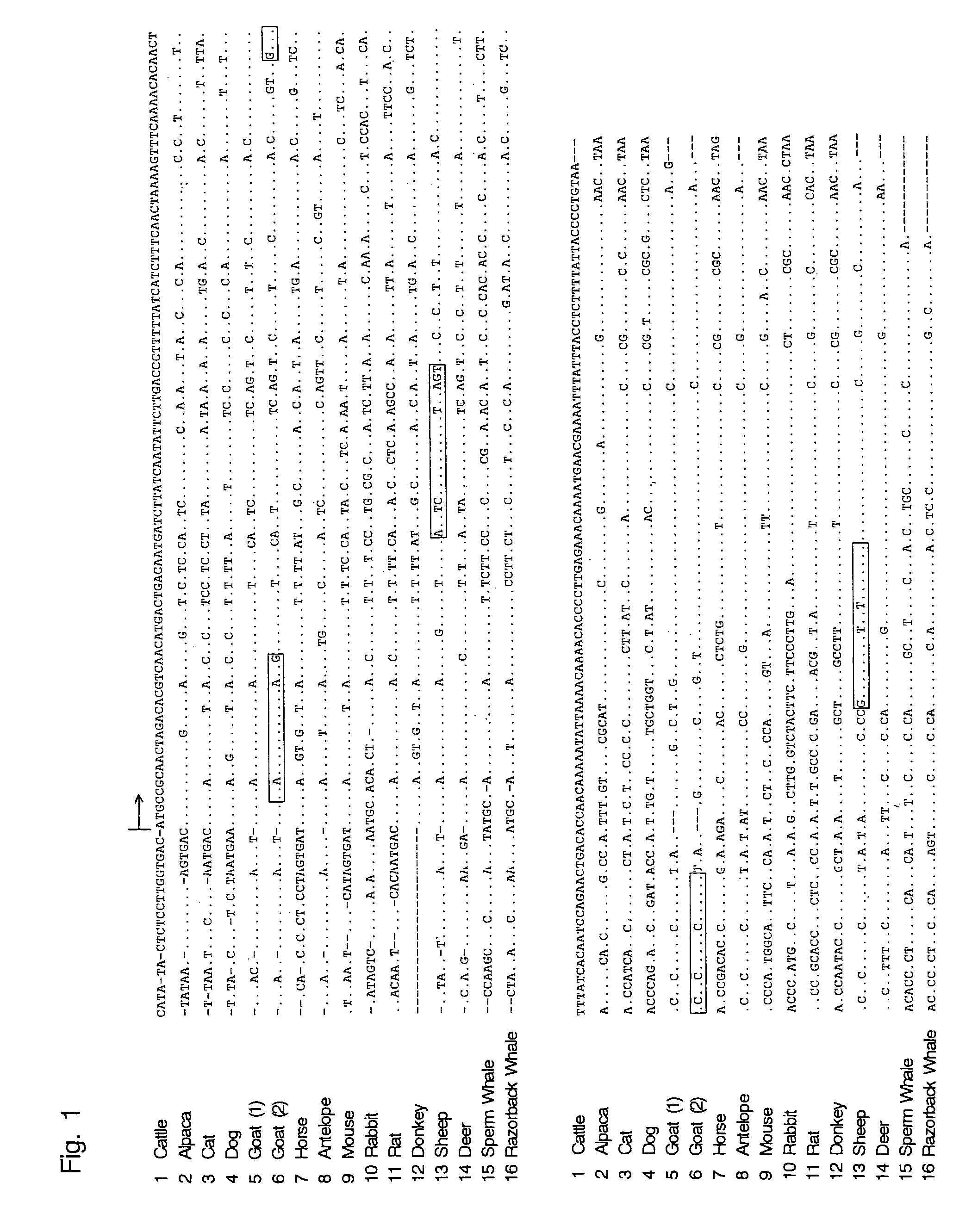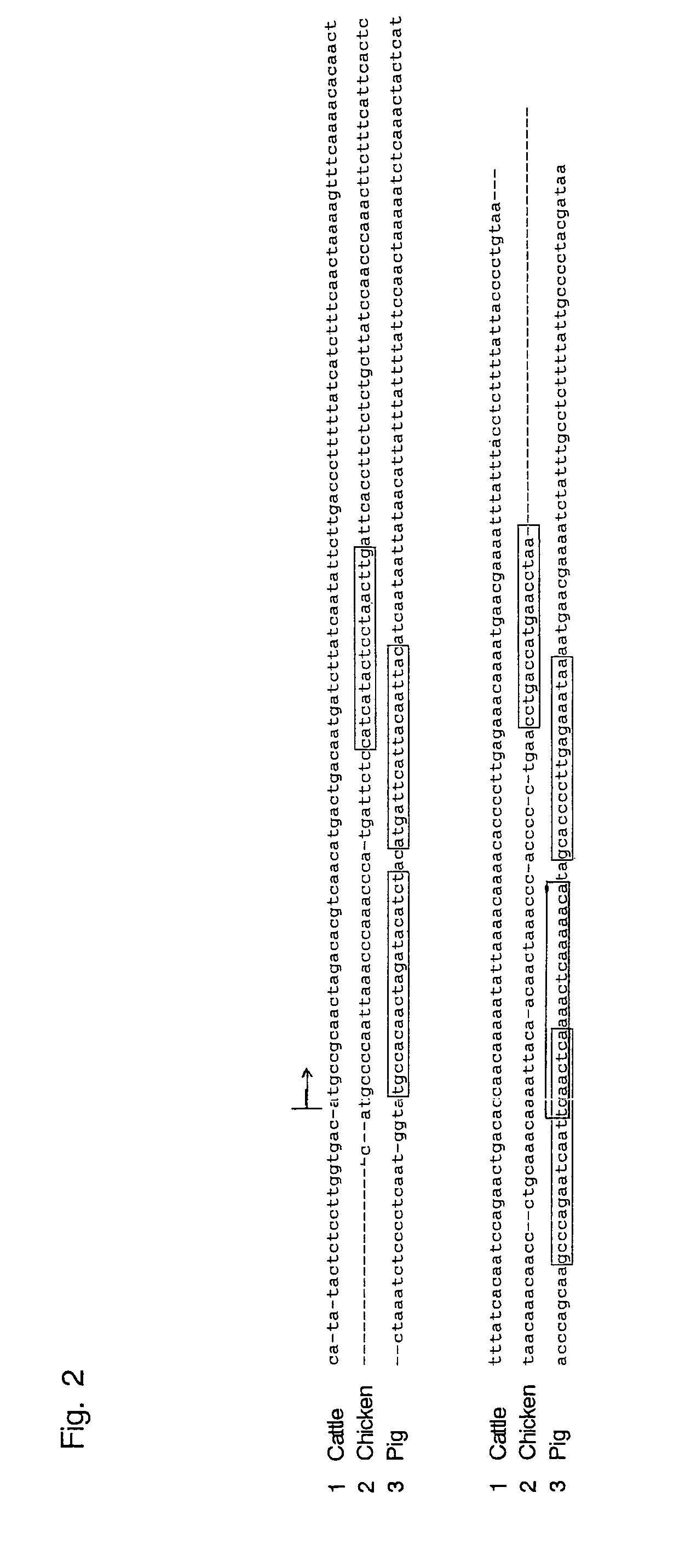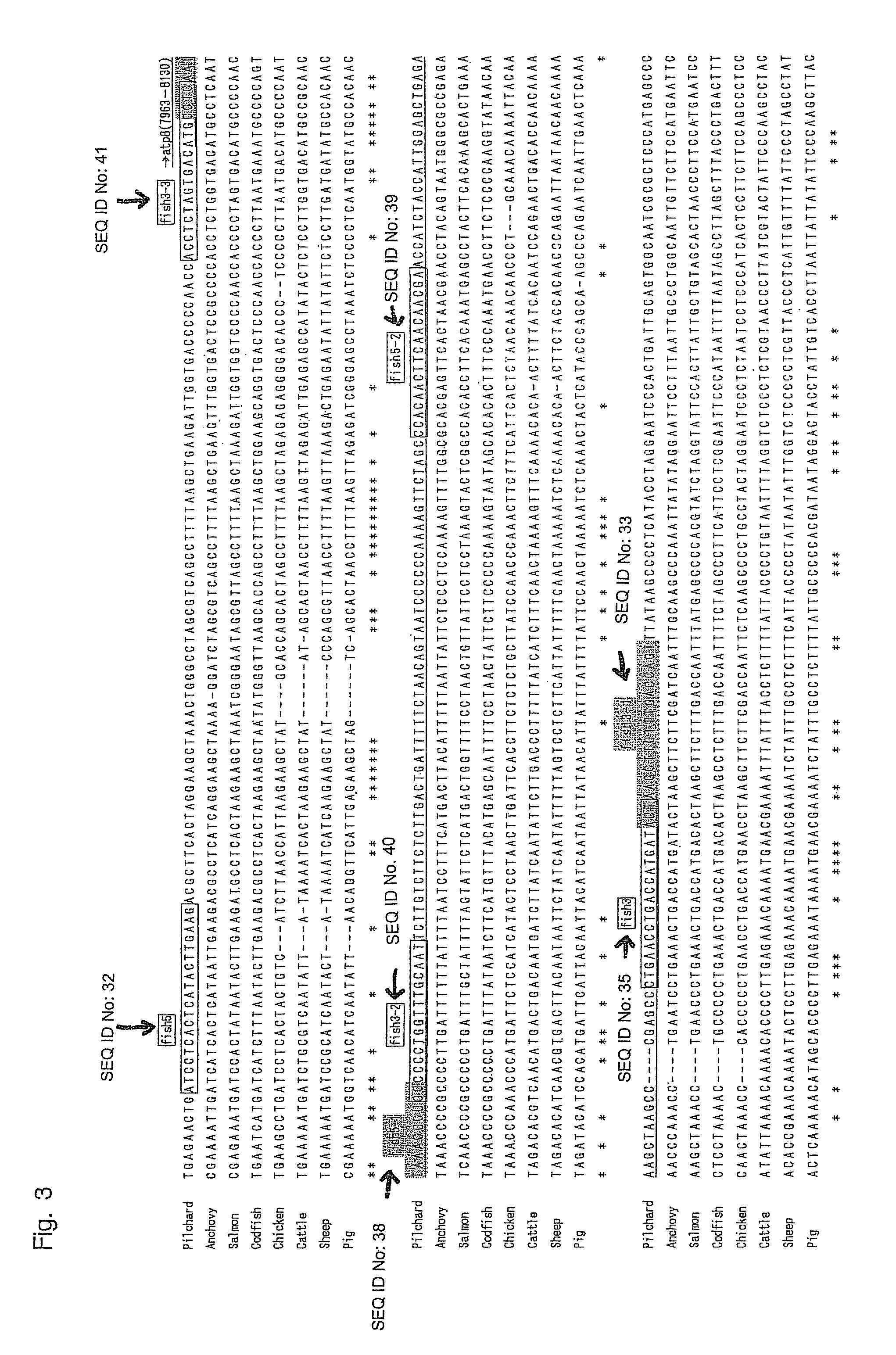Oligonucleotide sequences that identify species of animal
a technology of oligonucleotide sequences and animal species, applied in the field of methods, can solve the problems of high probability of nucleic acid fragmentation and bovine spongiform encephalopathy in cattle, and achieve the effect of high sensitivity
- Summary
- Abstract
- Description
- Claims
- Application Information
AI Technical Summary
Benefits of technology
Problems solved by technology
Method used
Image
Examples
example 1
Specific Detection of Mammal-Derived DNA Sequence
[0081]DNAs from 15 types of meat samples, these being cattle, sheep, goat, deer, pig, horse, rabbit, whale, chicken, codfish, salmon, sardine, crab, prawn, and clam, were prepared as follows. Each DNA sample was diluted in an appropriate concentration in buffer solution (10 mM Tris-HCl, pH 7.5, 20 mM EDTA, pH 7.5), ground using a bead grinding method, and then DNA was extracted using the mtDNA Extractor CT Kit (manufactured by Wako Pure Chemical Industries, Ltd.), which is a commercially available tissue cell mitochondrial DNA extraction kit.
[0082]With each of these DNA samples serving as a template, PCR was performed using anicon5 [SEQ ID NO: 1] and anicon3 [SEQ ID NO: 2] as the 5′ primer and the 3′ primer, respectively. The PCR conditions were as follows: reaction buffer solution (10 mM Tris-HCl, pH 8.3, 50 mM KCl, 1.5 mM MgCl2, 0.001% (w / v) gelatin); heat denaturing at 95° C. for 9 minutes, followed by the cycle of reactions of den...
example 2
Specific Detection of Ruminant-Derived DNA Sequence-1
[0084]With the 15 types of DNA samples prepared in the same manner as in Example 1 (except that a different type of cattle DNA sample was used in place of deer) serving as templates, PCR was performed using rumicon5 [SEQ ID NO: 3] and rumicon3 [SEQ ID NO: 4] as the 5′ primer and the 3′ primer, respectively. The PCR conditions were as follows: heat denaturing at 95° C. for 9 minutes, followed by the cycle of reactions of denaturing at 92° C. for one minute, annealing at 45° C. for two minutes, and extending at 72° C. for two minutes repeated 45 times, and lastly, the product was allowed to react at 72° C. for five minutes. After PCR, the reaction mixture was subjected to agarose gel electrophoresis, and the PCR product (DNA fragments) was detected by ethidium bromide staining. The results are shown in FIG. 6.
[0085]As shown in FIG. 6, by performing PCR using rumicon5 [SEQ ID NO: 3] and rumicon3 [SEQ ID NO: 4] as primers with each an...
example 3
Specific Detection of Ruminant-Derived DNA Sequence-2
[0087]With the 15 types of DNA samples prepared in the same manner as in Example 1 serving as templates, PCR was performed using Fpr-F [SEQ ID NO: 5] and Fpr-R [SEQ ID NO: 6] as the 5′ primer and the 3′ primer, respectively. The PCR conditions were as follows: heat denaturing at 95° C. for 9 minutes, followed by the cycle of reactions of denaturing at 92° C. for 30 seconds, annealing at 50° C. for 30 seconds, and extending at 72° C. for 30 seconds repeated 45 times, and lastly, the product was allowed to react at 72° C. for five minutes. After PCR, the reaction mixture was subjected to agarose gel electrophoresis, and the PCR product (DNA fragments) was detected by ethidium bromide staining. The results are shown in FIG. 7.
[0088]As shown in FIG. 7, by performing PCR using Fpr-F [SEQ ID NO: 5] and Fpr-R [SEQ ID NO: 6] as primers with each animal-derived DNA serving as a template, PCR products from DNAs derived from cattle, sheep, g...
PUM
 Login to View More
Login to View More Abstract
Description
Claims
Application Information
 Login to View More
Login to View More - R&D
- Intellectual Property
- Life Sciences
- Materials
- Tech Scout
- Unparalleled Data Quality
- Higher Quality Content
- 60% Fewer Hallucinations
Browse by: Latest US Patents, China's latest patents, Technical Efficacy Thesaurus, Application Domain, Technology Topic, Popular Technical Reports.
© 2025 PatSnap. All rights reserved.Legal|Privacy policy|Modern Slavery Act Transparency Statement|Sitemap|About US| Contact US: help@patsnap.com



